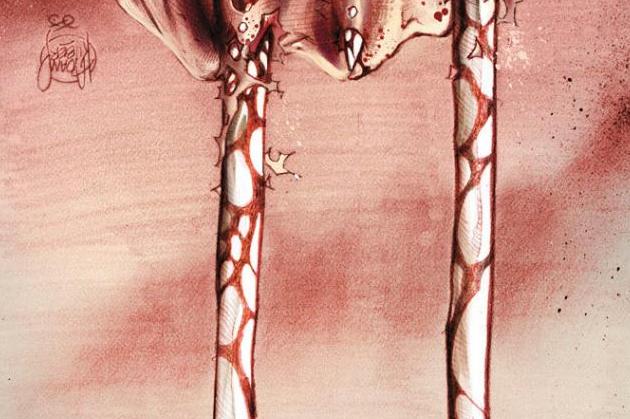Origin II #1
Writer Kieron Gillen Artist Adam Kubert
IntroductionAfter reading the first Origin tale, I had a hard time figuring out why the book was truly necessary. Paul Jenkins, Andy Kubert, Richard Isanove, Bill Jemas, and Joe Quesada tried their best to craft the story, but it still left me wondering why it need to be told. Writer Kieron Gillen is one of the very best in the industry right now, and if he feels the need to add to Wolverine’s backstory, I would still ask why. Although, if any one creator were to explore the adventures of the most overexposed mutant even further, I would rather it be him. Logan obviously has had more than one sad experience in his life, so just adding another layer of tragedy to his backstory will not pique my curiosity. It would also be fascinating to see the first days of Alpha Flight and such. Unfortunately, this comic brings some really tough baggage along with it; the question of why?
Writing
Kieron Gillen takes the notion of decompressed storytelling in this issue, and goes insane with it. In 22 pages he introduces a couple of wolves, and well.....that is about it. The flair is in the caption boxes that he writes here, the book is a quick read and could easily be finished in a few minutes. There is also not a whole of text or content on each page. The narration is extremely well written, and gives the illusion that there is something more in these pages than just violence and wolves. The title page towards the end is a massive teaser at what could be next in the series, and if Gillen introduces more layers to this story towards the end, this could be an interesting first chapter. As it stands in it’s current form, this is either an extremely decompressed story, or a tease to something greater. Only the next issue will offer a clear indication of what is coming next.
Art
Adam Kubert offers some okay pencils in this installment of the book. The artist has some fair draftsmanship, and a style that has much energy, but lacks the precise linework in order to amount to something greater. There are a few really great layouts, in which the full scope of Kubert’s talent is taken advantage of, but those moments are few and far between in this issue. A great example is the credits page previously mentioned, that takes a nice pacing and art cue from the heavy story to deliver something more cinematic in the form of credits appearing above the page. The storytelling is captured well here with visceral feeling of violence permeating throughout the tale. Motion blur and the use of grids also help utilize the fluidity of the script. The tale can almost seem like a vehicle for Kubert.
Conclusion
Gillen tells a story here that is seriously decompressed, some clever narration helps string string things along, but the story is tripped down to it’s barest essentials. Adam Kubert has some good art which is necessary, since he has to drive the story.





